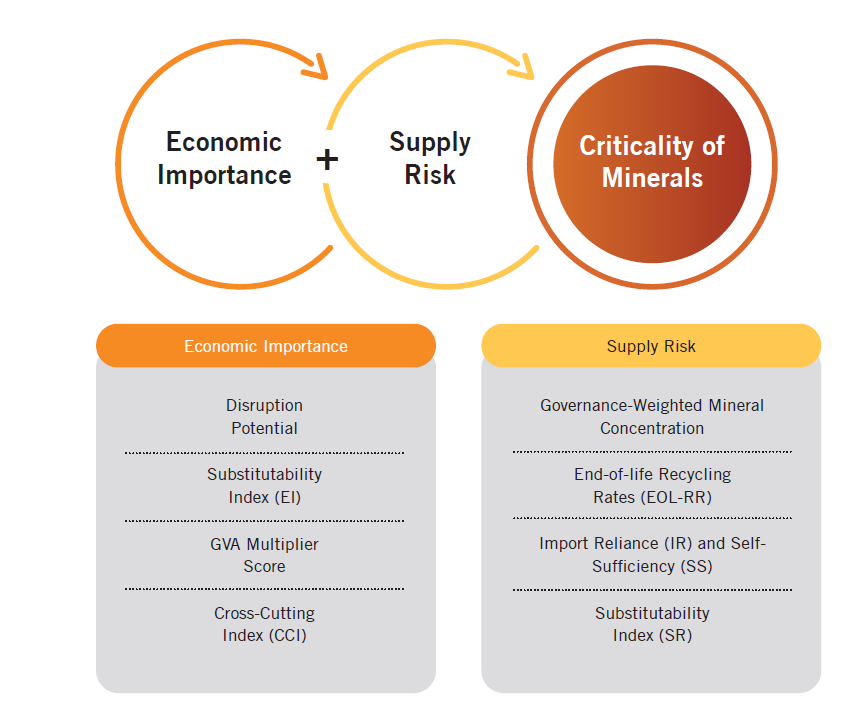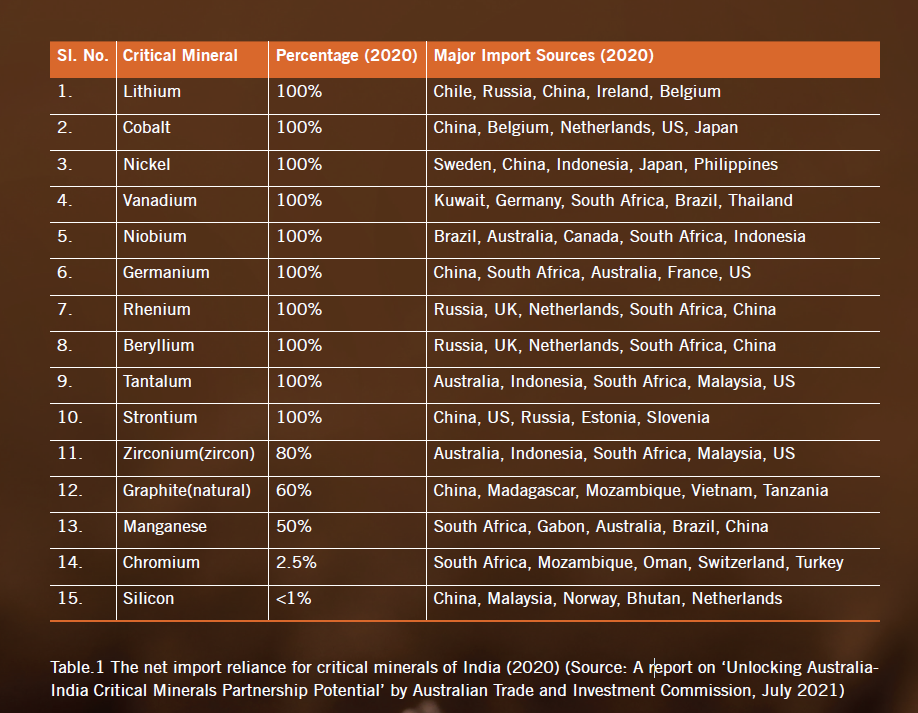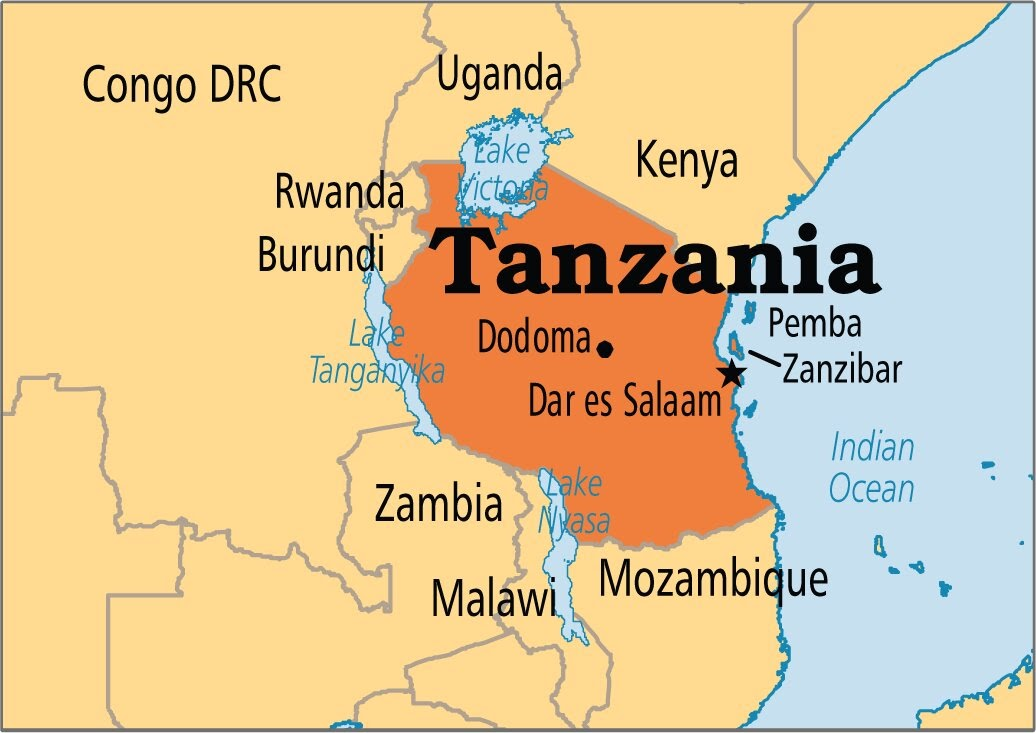Biodiversity & Environment
Paris Global Climate Financing Summit
For Prelims: Climate Financing, Russia-Ukraine Conflict, Global South, World Bank, IMF, SDR, Paris Agreement, Kyoto Protocol.
For Mains: Paris Global Climate Financing Summit.
Why in News?
The Summit for a New Global Financing Pact was recently held in Paris with an objective of tackling the lack of financial support for developing countries.
- The Summit was announced at the 27th Conference of Parties (COP27) of the UNFCCC. The summit was also attended by India's Finance Minister.
What are the Key Highlights of the Summit?
- The Scale of Crises Faced by Developing Countries:
- Developing countries are grappling with a combination of crises, including poverty, escalating debt levels, and inflation triggered by events such as the Russia-Ukraine Conflict.
- Besides economic challenges, developing nations are under pressure to decarbonise their economies while lacking sufficient Climate Finance.
- Demands from the Global South:
- Leaders from the Global South demand that Multilateral Development Banks (MDB) address transboundary challenges and provide increased resources for development, including climate finance.
- Developing countries call for more concessional and grant financing to address their debt burdens, also advocating for debt reductions particularly for the least developed nations.
- While acknowledging the potential of private sector investment, they emphasise that long-term development funds are necessary to complement private sector financing.
- Announcements at the Summit:
- The Summit announced the unlocking of an additional USD 200 billion lending capacity for emerging economies.
- The World Bank introduced disaster clauses to suspend debt payments during extreme weather events.
- The IMF announced the allocation of USD 100 billion in SDRs (Special Drawing Rights) for vulnerable countries, although some SDRs still require approval from the US Congress.
- A new Just Energy Transition Partnerships (JETP) deal worth 2.5 billion Euros was announced for Senegal, aimed at increasing the share of renewable energy in the country's electricity mix.
- Zambia reached a USD 6.3 billion debt restructuring deal, and calls were made for a Global Expert Review on Debt, Nature, and Climate.
- The EU called for increased coverage of global emissions by Carbon Pricing Mechanisms and allocating a portion of revenues to climate finance.
- The Summit indicated that the long-awaited USD 100 billion climate finance goal would be achieved this year.
- This commitment was made at UNFCCC COP 15 in Copenhagen in 2009.
- The Summit announced the unlocking of an additional USD 200 billion lending capacity for emerging economies.
What is Climate Finance?
- About:
- It refers to local, national, or transnational financing—drawn from public, private and alternative sources of financing—that seeks to support mitigation and adaptation actions that will address climate change.
- Global Discussions:
- The UNFCCC, Kyoto Protocol, and the Paris Agreement call for financial assistance from Parties with more financial resources (Developed Countries) to those that are less endowed and more vulnerable (Developing Countries).
- This is in accordance with the principle of “Common but Differentiated Responsibility and Respective Capabilities” (CBDR).
- In UNFCCC COP26, new financial pledges to support developing countries in achieving the global goal for adapting to the effects of climate change were made.
- The UNFCCC, Kyoto Protocol, and the Paris Agreement call for financial assistance from Parties with more financial resources (Developed Countries) to those that are less endowed and more vulnerable (Developing Countries).
- Significance:
- Climate Change Impact Mitgation and Adaptation:
- Climate finance is needed for climate impact mitigation; large-scale investments are required to significantly reduce emissions.
- It is equally important for adaptation; significant financial resources are needed to adapt to the adverse effects of a changing climate.
- Climate finance is critical to achieve the goal of limiting the rise in the earth’s average temperature to below 2°C over pre-industrial levels, (2018 IPCC report).
- Recognition of Responsibilities:
- It recognises that the contribution of countries to climate change and their capacity to prevent it and cope with its consequences vary enormously.
- Hence, developed countries should also continue to take the lead in mobilising climate finance through a variety of actions, including supporting country-driven strategies and taking into account the needs and priorities of developing country Parties.
- Climate Change Impact Mitgation and Adaptation:
What are Initiatives regarding Climate Finance?
- Global:
- In 2010, the 194 member countries agreed to create the Green Climate Fund (GCF) at UNFCCC COP 16.
- GCF was established to support the developing countries in their efforts to challenge climate change by aiding them in shifting to low-emission and climate-resilient development regime.
- It is headquartered in Incheon, Republic of Korea.
- At the COP27 summit, delegates from the UN agreed to create a 'Loss and Damages' fund to compensate the most vulnerable countries for their losses due to climate-related disasters.
- In 2010, the 194 member countries agreed to create the Green Climate Fund (GCF) at UNFCCC COP 16.
- India:
- National Adaptation Fund for Climate Change (NAFCC):
- It was established in 2015 to meet the cost of adaptation to climate change for the State and Union Territories of India that are particularly vulnerable to the adverse effects of climate change.
- National Clean Energy Fund:
- It was created through the Finance Bill 2010-11 by the recommendation of Cabinet Committee of Economic Affairs (CCEA) to promote clean energy and funded through an initial carbon tax on the use of coal by industries.
- It is governed by an Inter-Ministerial Group with the Finance Secretary as the Chairman.
- Its mandate is to fund research and development of innovative clean energy technology in the fossil and non-fossil fuel-based sectors.
- National Adaptation Fund:
- The fund was established in 2014 with a corpus of Rs. 100 crores with the aim of bridging the gap between the need and the available funds.
- The fund is operated under the Ministry of Environment, Forests, and Climate Change (MoEF&CC).
- National Adaptation Fund for Climate Change (NAFCC):
UPSC Civil Services Examination, Previous Year Question (PYQ)
Prelims
Q. Which of the following statements regarding ‘Green Climate Fund’ is/are correct? (2015)
- It is intended to assist the developing countries in adaptation and mitigation practices to counter climate change.
- It is founded under the aegis of UNEP, OECD, Asian Development Bank and World Bank.
Select the correct answer using the code given below:
(a) 1 only
(b) 2 only
(c) Both 1 and 2
(d) Neither 1 nor 2
Ans: (a)
Mains:
Q. Describe the major outcomes of the 26th session of the Conference of the Parties (COP) to the United Nations Framework Convention on Climate Change (UNFCCC). What are the commitments made by India in this conference? (2021)


Governance
Critical Minerals for India
For Prelims: Critical Minerals, Net Zero' Emission Target, Electric vehicles, Renewable energy, Mineral Security Partnership.
For Mains: Significance of Critical Minearls for India, Mineral Distribution in India
Why in News?
The Ministry of Mines, Government of India recently unveiled the first-ever report on "Critical Minerals for India" prepared by an expert team constituted by the Ministry of Mines.
- The report identifies and prioritizes minerals essential for various industrial sectors, aligning with India's vision of achieving a robust and resilient mineral sector in line with the larger goal of attaining 'Net Zero' emissions.
What are Critical Minerals?
- Minerals:
- Minerals are natural substances that are formed by geological processes. They have a definite chemical composition and physical properties.
- They are classified into metallic and non-metallic minerals based on their characteristics and uses.
- Metallic minerals are those that contain metals or metal compounds, such as iron, copper, gold, silver, etc.
- Non-metallic minerals are those that do not contain metals, such as limestone, coal, mica, gypsum, etc.
- Critical Minerals:
- Critical minerals are those minerals that are essential for economic development and national security, the lack of availability of these minerals or concentration of extraction or processing in a few geographical locations may lead to supply chain vulnerabilities and even disruption of supplies.
- Declaration of Critical Minerals:
- It is a dynamic process, and it can evolve over time as new technologies, market dynamics, and geopolitical considerations emerge.
- Different countries may have their own unique lists of critical minerals based on their specific circumstances and priorities.
- The US has declared 50 minerals critical in light of their role in national security or economic development.
- Japan has identified a set of 31 minerals as critical for their economy.
- The UK considers 18 minerals critical, EU (34) and Canada (31).
- Critical Minerals for India:
- Expert Committe under Ministry of Mines has identified a set of 30 critical minerals for India.
- These are Antimony, Beryllium, Bismuth, Cobalt, Copper, Gallium, Germanium, Graphite, Hafnium, Indium, Lithium, Molybdenum, Niobium, Nickel, PGE, Phosphorous, Potash, REE, Rhenium, Silicon, Strontium, Tantalum, Tellurium, Tin, Titanium, Tungsten, Vanadium, Zirconium, Selenium and Cadmium.
- Creation of Centre of Excellence for Critical Minerals (CECM) in the Ministry of Mines is also recommended by the Committe.
- CECM will periodically update the list of critical minerals for India and notify the critical mineral strategy from time to time.
What is the Significance of Critical Minerals for India?
- Economic Development: Industries such as high-tech electronics, telecommunications, transport, and defense heavily rely on these minerals.
- Additionally, critical minerals are essential for green technologies like solar panels, wind turbines, batteries, and electric vehicles.
- Given India's significant domestic demand and potential in these sectors, their growth can lead to job creation, income generation, and innovation.
- National Security: These minerals are vital for defense, aerospace, nuclear, and space applications, necessitating the use of high-quality and reliable materials capable of withstanding extreme conditions and performing complex functions.
- To ensure defense preparedness and self-reliance, India must secure a steady supply of critical minerals.
- Environmental Sustainability: They are integral to the transition toward clean energy and a low-carbon economy, enabling the reduction of India's reliance on fossil fuels and greenhouse gas emissions.
- With a commitment to attaining 450 GW of renewable energy capacity by 2030, these minerals are essential for achieving India's green objectives.
- International Cooperation: These collaborations enable India to diversify its import sources, reduce dependency on China, and enhance mineral security and resilience.
What are the Challenges for India Related to Critical Minerals?
- Implications of the Russia-Ukraine Conflict: Russia is a significant producer of various critical minerals, while Ukraine possesses reserves of lithium, cobalt, graphite, and rare earth elements.
- The ongoing war between the two countries affects these critical mineral supply chains.
- Limited Domestic Reserves: India has limited reserves of critical minerals such as lithium, cobalt, and other rare earth elements.
- Most of these minerals are imported, making India heavily dependent on other countries for its supply. This reliance on imports can create vulnerability in terms of price fluctuations, geopolitical factors, and supply disruptions.
- Increasing Demand for Minerals: The manufacturing of renewable energy technologies and the transition to electric vehicles necessitate larger quantities of minerals such as copper, manganese, zinc, lithium, cobalt, and rare earth elements.
- India's limited reserves and higher requirements make it reliant on foreign partners to meet domestic needs.
Conclusion
India has an opportunity to strengthen its international cooperation and partnerships through the strategic management of critical minerals. By participating in initiatives like the Mineral Security Partnership (MSP) led by the United States, India can contribute to the establishment of global critical mineral supply chains.
- Bilateral agreements with countries such as Australia, Canada, Japan, and South Africa can further enhance India's position in critical mineral exploration, development, processing, and trade.
UPSC Civil Services Examination Previous Year Question (PYQ)
Mains
Q. Despite India being one of the countries of Gondwanaland, its mining industry contributes much less to its Gross Domestic Product (GDP) in percentage. Discuss. (2021)
Q. “In spite of adverse environmental impact, coal mining is still inevitable for development”. Discuss. (2017)


Indian Economy
India-US Deal for Semiconductor Unit
For Prelims: Semiconductor, India’s Semiconductor Mission, PLI, India's Self-Reliance, SPECS, DLI.
For Mains: India’s Push for Semiconductor
Why in News?
Recently, US-based Company – Micron Technology, has signed a Memorandum of Understanding (MoU) with the state government of Gujarat to establish a Semiconductor Unit worth Rs 22,500 crore near Ahmedabad.
- Earlier, India and the US signed MoU on establishing the Semiconductor Supply chain during India–US 5th Commercial Dialogue 2023, which can help India realise its long-nurtured dream of becoming a hub for electronic goods.
What is the Significance of the MoU?
- The MoU seeks to establish a collaborative mechanism on semiconductor supply chain resiliency and diversification in view of US’s CHIPS and Science Act, 2022 and India’s Semiconductor Mission.
- The project aims to create 5,000 direct jobs and contribute to India's Self-Reliance in memory chip manufacturing.
- It aligns with govt’s goal of promoting domestic manufacturing and reducing import dependency in the semiconductor sector and is expected to bolster India's position as a global semiconductor manufacturer.
What are Semiconductor Chips?
- About:
- Semiconductors are materials which have a conductivity between conductors and insulators. They can be pure elements - silicon and germanium or compounds - gallium, arsenide and cadmium selenide.
- They are the basic building blocks that serve as the heart and brain of all modern electronics and information and communications technology products.
- These chips are now an integral part of contemporary automobiles, household gadgets and essential medical devices such as ECG machines.
- Significance:
- Semiconductors are essential to almost all sectors of the economy including aerospace, automobiles, communications, clean energy, information technology and medical devices etc.
- The high demand for these critical components has outstripped supply, creating a global chip shortage and resulting in lost growth and jobs in the economy.
- Semiconductors and displays are the foundation of modern electronics driving the next phase of digital transformation under Industry 4.0.
Where does India Stand in the Semiconductor Market?
- Indian semiconductor industry in 2022 was USD 27 Billion, with over 90% being imported, and therefore a significant external dependence for Indian chip consumers.
- Countries exporting semiconductors to India include China, Taiwan, the USA, Japan, etc.
- The Indian semiconductor market is expected to reach USD 55 Billion by 2026 with its own consumption of semiconductors expected to cross USD 80 billion by 2026 and to USD 110 billion by 2030.
What are the Challenges Regarding Semiconductor Manufacturing in India?
- Extremely Expensive Fab Setup:
- A semiconductor fabrication facility (or fab) can cost multiples of a billion dollars to set up even on a relatively small scale and lagging by a generation or two behind the latest in technology.
- Higher Investment:
- Semiconductors and display manufacturing is a very complex and technology-intensive sector involving huge capital investments, high risk, long gestation and payback periods, and rapid changes in technology, which require significant and sustained investments.
- Minimal Fiscal Support from Government:
- The level of fiscal support currently envisioned is minuscule when one considers the scale of investments typically required to set up manufacturing capacities in the various sub-sectors of the semiconductor industry.
- Lack of Fabrication Capacities:
- India has a decent chip design talent but it never built-up chip fab capacity. The ISRO and the DRDO have their respective fab foundries but they are primarily for their own requirements and are also not as sophisticated as the latest in the world.
- India has only one old fab which is located in Mohali, Punjab.
- Resource Inefficient Sector:
- Chip fabs are also very thirsty units requiring millions of litres of clean water, an extremely stable power supply, a lot of land and a highly skilled workforce.
What are the Initiatives Related to Semiconductors?
- In 2021, India announced its roughly USD 10 billion-dollar Production-Linked Incentive (PLI) scheme to encourage semiconductor and display manufacturing in the country.
- In 2021, the MeitY also launched the Design Linked Incentive (DLI) Scheme to nurture at least 20 domestic companies involved in semiconductor design and facilitate them to achieve a turnover of more than Rs.1500 crore in the next 5 years.
- India has also launched the Scheme for Promotion of Manufacturing of Electronic Components and Semiconductors (SPECS) for manufacturing of electronics components and semiconductors.
- India’s Semiconductor Mission was launched in 2021 with a total financial outlay of Rs 76,000 crore as a part of the comprehensive program for the development of sustainable semiconductors and display ecosystem in India. The components of the mission include:
- Scheme for setting up of Semiconductor Fabs in India
- Scheme for setting up of Display Fabs in India - fiscal support of up to 50% of Project Cost subject to a ceiling of INR 12,000 crore per Fab.
- Scheme for setting up of Compound Semiconductors / Silicon Photonics / Sensors Fab and Semiconductor ATMP/ OSAT facilities in India.
Way Forward
- Favourable trade policies are critical for building a plurilateral semiconductor ecosystem.
- India must also improvise research and development in this sector where it is currently lacking.
- There is a need for the Indian government to connect related industries in India to create the chip manufacturing ecosystem. National capability needs to be enhanced.
- Besides the US, India should also explore the similar opportunities to collaborate with other countries such as Taiwan and Japan or other technologically advanced, friendly nations to promote the Domestic manufacturing and reduce import dependency in the Semiconductor Sector.
UPSC Civil Services Examination, Previous Year Question (PYQ)
Prelims:
Q. Which one of the following laser types is used in a laser printer? (2008)
(a) Dye laser
(b) Gas laser
(c) Semiconductor laser
(d) Excimer laser
Ans: (c)
Q. With reference to solar power production in India, consider the following statements: (2018)
- India is the third largest in the world in the manufacture of silicon wafers used in photovoltaic units.
- The solar power tariffs are determined by the Solar Energy Corporation of India.
Which of the statements given above is/are correct?
(a) 1 only
(b) 2 only
(c) Both 1 and 2
(d) Neither 1 nor 2
Ans: (d)


Indian Economy
Animal Husbandry and Dairying
For Prelims: Rashtriya Gokul Mission, milk, Kisan Credit Cards (KCC), soil-less cultivation
For Mains: Role of dairy and livestock sector in Indian economy, Related issues and Initiatives taken to promote the sector.
Why in News?
The Union Minister of Animal Husbandry and Dairying, Government of India recently highlighted the achievements and initiatives of the Department, emphasizing the importance of animal husbandry in boosting rural incomes and supporting agricultural diversification.
- The Department of Animal Husbandry and Dairying in India has undertaken significant initiatives in the past nine years to enhance productivity.
What are the Achievements in Animal Husbandry and Dairy?
- Livestock Sector:
- Livestock sector contributes significantly to the Indian economy, with a compound annual growth rate (CAGR) of 7.93% from 2014-15 to 2020-21.
- The livestock sector's contribution to the total agriculture and allied sector Gross Value Added (GVA) has increased from 24.38% in 2014-15 to 30.87% in 2020-21.
- Livestock population in India includes 303.76 million bovines, 74.26 million sheep, 148.88 million goats, 9.06 million pigs, and 851.81 million poultry as per 20th Livestock Census.
- Dairy Sector:
- Dairy is the largest agricultural commodity in India, contributing 5% to the national economy and employing over 8 crore farmers directly.
- India ranks 1st in milk production, accounting for 23% of global milk production.
- Milk production has increased by 51.05% in the past eight years, reaching 221.06 million tonnes in 2021-22.
- Milk production is growing at the annual growth rate of 6.1% over the past 8 years whereas world milk production is growing at 1.2% per annum.
- Per capita milk availability in India is 444 grams per day, surpassing the world average of 394 grams per day.
- Egg and Meat Production:
- India ranks 3rd in egg production and 8th in meat production globally.
- Egg production has increased from 78.48 billion in 2014-15 to 129.60 billion in 2021-22, growing at a rate of 7.4% per annum.
- Meat production has risen from 6.69 million tonnes in 2014-15 to 9.29 million tonnes in 2021-22.
What are Key Initiatives Taken to Enhance the Livestock Sector?
- Rashtriya Gokul Mission:
- Nationwide Artificial Insemination Programme: Over 5.71 crore animals covered, benefiting 3.74 crore farmers.
- Artificial insemination is a novel method of bringing about impregnation in female breeds.
- Promotion of IVF Technology: Production of viable embryos and birth of calves.
- Sex Sorted Semen Production: Introduction of sex sorted semen with up to 90% accuracy for producing female calves.
- Only female calves can be produced (with more than 90% accuracy) which will help double the growth rate of milk production in the country.
- DNA-based Genomic Selection: Genotyping of animals for selection of elite indigenous breeds.
- Animal Identification and Traceability: Identification and registration of 53.5 crore animals using unique identification label (UID) tags.
- Progeny Testing and Pedigree Selection: Implemented for specific cattle and buffalo breeds.
- National Digital Livestock Mission: Enhance livestock productivity, control diseases, and ensure quality for domestic and export markets.
- Breed Multiplication Farms: Subsidy of 50% (up to Rs 2 crore per farm) on capital cost (excluding land cost) is provided to private entrepreneurs under this scheme for establishment of breed multiplication farms.
- Nationwide Artificial Insemination Programme: Over 5.71 crore animals covered, benefiting 3.74 crore farmers.
- Supporting Dairy Cooperatives and Farmer Producer Organizations: Soft working capital loans are provided to assist dairy cooperative societies during adverse market conditions or natural calamities.
- Dairy Processing & Infrastructure Development Fund (DIDF): Creation and modernization of milk processing, chilling, and value addition infrastructure.
- National Livestock Mission: Direct subsidies to individuals, FPOs, and others to establish poultry farms, sheep and goat breed multiplication farms, piggery farms, and feed and fodder units.
- Animal Husbandry Infrastructure Development Fund: Incentivizing investments for dairy and meat processing, animal feed plants, and breed improvement technology.
- Livestock Health and Disease Control Programme:
- Animals ear tagged: Approximately 25.04 crores.
- Foot and Mouth Disease (FMD) vaccination: 24.18 crore animals vaccinated in the second round, ongoing vaccination for Round III with 4.66 crore animals vaccinated.
- Brucella vaccination: 2.19 crore animals vaccinated.
- Mobile Veterinary Units (MVUs): 1960 MVUs flagged off in 16 States/UTs, with 1181 operational in 10 States.
- Livestock Census & Integrated Sample Survey Scheme:
- Integrated Sample Survey: Provides estimates of major livestock products (Milk, Egg, Meat, Wool) published in the Annual Publication of Basic Animal Husbandry Statistics (BAHS).
- Livestock Census: Provides species-wise and breed-wise livestock population data at the household level in rural and urban areas.
- 20th Livestock Census completed in 2019, with the publication of the "20th Livestock Census-2019" report containing species-wise and state-wise the population of livestock. Breed-wise reports on Livestock and Poultry were also published.
- Kisan Credit Cards (KCC) for Dairy Farmers: More than 27.65 lakh fresh KCCs sanctioned for AHD farmers in milk cooperatives and milk producer companies.
What are the Challenges in Animal Husbandry and Dairying?
- Disease management and animal health issues.
- Availability and quality of feed and fodder.
- Lack of modern infrastructure and technology.
- Shortage of skilled personnel and veterinary services.
- Financial constraints and limited access to credit.
- Marketing and distribution challenges.
Way Forward
- Strengthen veterinary services and infrastructure, promote vaccination programs and regular health check-ups, and enhance disease surveillance and early detection systems for livestock.
- Promote cultivation of high-quality fodder crops, encourage adoption of modern techniques like hydroponics and silage production, and establish feed processing units for a consistent supply of quality feed.
- Hydroponics is a soil-less cultivation method using nutrient-rich water, while silage production involves fermenting and preserving high-moisture fodder crops for livestock feed.
- Upgrade and modernize livestock farms, dairy processing units, and veterinary clinics; promote adoption of advanced technologies, and invest in research and development.
- Formulate and implement supportive policies and Provide incentives for investments in animal husbandry and dairying.
UPSC Civil Services Examination, Previous Year Question (PYQ)
Prelims
Q.1 Consider the following crops of India: (2012)
- Cowpea
- Green gram
- Pigeon pea
Which of the above is/are used as pulse, fodder and green manure?
(a) 1 and 2 only
(b) 2 only
(c) 1 and 3 only
(d) 1, 2 and 3
Ans: (a)
Mains
Q.1 Livestock rearing has a big potential for providing non-farm employment and income in rural areas. Discuss suggesting suitable measures to promote this sector in India. (2015)


Indian Polity
Madras HC: Merit over Caste in Temple Priest Appointments
For Prelims: Agama Shastra, Agama Principles, Article 15
For Mains: Tradition vs. Modernity in Temple Priest Appointments, Legal aspects related to temple priest appointments in India.
Why in News?
The Madras High Court has recently made a significant ruling that highlights the importance of meritocracy and equality in the appointment of temple priests.
- The court's decision comes in response to a writ petition filed in 2018, challenging a job announcement for the post of Archagar/Sthanigar (temple priest) in Sri Sugavaneswarar Swamy Temple, Salem (TN).
- The petitioner argued for appointments based on traditional guidelines mentioned in the temple's Agama scriptures and the hereditary rights of long-serving priests.
- The court ruled in favor of merit-based appointments, rejecting the petitioner's claim.
What are the Legal and Historical Aspects of Temple Priest Appointments?
- Legal Aspects:
- Article 15 prohibits discrimination on the grounds of religion, race, caste, sex, or place of birth.
- It states that the State shall not discriminate against any citizen on these grounds in matters of employment or access to public places.
- Also, states have the authority to regulate religious institutions and their affairs, including the appointment of temple priests. State legislation may prescribe qualifications, procedures, and eligibility criteria for such appointments.
- Article 15 prohibits discrimination on the grounds of religion, race, caste, sex, or place of birth.
- Historical Aspects:
- In many Hindu temples, the tradition of hereditary appointments has prevailed, where temple priesthood is passed down within specific families or castes.
- Temples often follow Agama scriptures that provide guidelines for temple rituals and practices.
- This practice is often based on the belief in ancestral knowledge and purity of lineage.
- However, in some regions open competitions or selection based on qualifications are also prevalent.
- In many Hindu temples, the tradition of hereditary appointments has prevailed, where temple priesthood is passed down within specific families or castes.
What are the SC Judgements regarding Temple Priest Appointments?
- Seshammal & others vs. State of Tamil Nadu (1972):
- The SC held that the appointment of an Archaka (temple priest) is a secular function, and the performance of religious service by the priests is an integral part of the religion.
- The court differentiated between the secular and religious aspects and stated that the prescription provided by the Agamas (scriptures) is significant only for the performance of the religious service.
- Any individual, regardless of caste or creed, can be appointed as an Archaka if they are well-versed and qualified in the Agamas and the rituals required for temple worship.
- Based on this decision of the SC, the Madras HC in this case has held that ancestry based on caste will have no role to play in the appointment of Archaka if the person so selected otherwise satisfies the requirements.
- The SC held that the appointment of an Archaka (temple priest) is a secular function, and the performance of religious service by the priests is an integral part of the religion.
- N. Adithayan vs. Travancore Devaswom Board (2002):
- The SC rejected the customary claim that only Brahmins (in this case Malayala Brahmins) can perform rituals in temples.
- The court ruled that trained individuals qualified to perform the puja in an appropriate manner can carry out the rituals.
- The SC emphasised that the restriction of only Brahmins performing rituals in certain temples was due to historical reasons, such as limited access to Vedic literature and sacred initiation.
What is Agama Shastra?
- Agama Shastra is a manual for worship, rituals and construction of temples in Hinduism. In Sanskrit, agama means “handed down by tradition” and shastra refers to a commentary or treatise.
- Agamas expound a variety of subjects and could be called the guides to a huge range of Hindu practices. They contain:
- Manuals for deity worship, religious ceremonies, festivals etc.
- Methods for salvation, Yoga
- Devata, Yantra
- Prayogas using various mantras
- Temple Building, Town planning
- Iconometry
- Domestic practices and civil codes
- Social/Public festivals
- Holy Places
- Principles of Universe, Creation and Dissolution
- Spiritual Philosophy
- Worlds
- Austerities
- Agama Principles emphasize the importance of following precise rituals and procedures to maintain the sanctity and spiritual efficacy of the temple.
- The Agama texts are considered authoritative and hold significance in the appointment and training of temple priests.


Indian Economy
Indian Startup Ecosystem
For Prelims: Indian Startup Ecosystem, Unicorns, Gazelles, Cheetahs .
For Mains: Indian Startup Ecosystem.
Why in News?
According to “slowdown in India's startup ecosystem" report, new additions in the coveted unicorn list declined sharply in 2023, indicating a slowdown in the Indian startup ecosystem.
- India added only three unicorns' startups having a valuation of over USD 1 billion in 2023 against 24 in the year-ago period, as per the ASK Private Wealth Hurun Indian Future Unicorn Index 2023.
What is the Scenario of the Startup Ecosystem in India?
- India has emerged as the 3rd largest ecosystem for startups globally as of 31st May 2023. India ranks 2nd in innovation quality with top positions in the quality of scientific publications and the quality of its universities among middle-income economies.
- Indian Startup Ecosystem has seen exponential growth in past few years (2015-2022):
- 15X increase in the total funding of startups
- 9X increase in the number of investors
- 7X increase in the number of incubators
- As of May 2023, India is home to 108 Unicorns with a total valuation of USD 340.80 Bn.
- Out of the total number of unicorns, 44 unicorns were born in 2021 and 21 unicorns were born in 2022.
What are the Terms Related to Startups?
- Decacorn: a current valuation of over USD 10 billion.
- Unicorns: Start-ups founded after the year 2000 with a valuation of USD 1 billion.
- Gazelles: Start-ups that are most likely to go Unicorn in the next three years.
- Cheetahs: Start-ups that could go Unicorn in the next five years.
What are the Challenges Faced by Indian Startups?
- Funding Challenges:
- Indian startups encounter difficulties in securing adequate funding for their ventures. Limited access to capital inhibits their growth potential and hampers innovation. Startups face challenges in attracting investors and obtaining venture capital due to various factors such as risk aversion, uncertain market conditions, and lack of investor confidence.
- Revenue Generation Struggles:
- Many startups face challenges in generating sustainable revenues. They often struggle to find viable business models, monetize their products or services, and achieve profitability. Limited market reach, competition from established players, and insufficient customer acquisition pose additional hurdles.
- Lack of Supportive Infrastructure:
- The absence of a robust infrastructure ecosystem can impede the growth of startups.
- Challenges include inadequate physical infrastructure, limited access to technological resources, and a dearth of incubation centers, mentorship programs, and networking opportunities. Startups require supportive environments to thrive and access necessary resources, expertise, and guidance.
- Regulatory Environment and Tax Structures:
- Startups in India face regulatory hurdles and complex tax structures.
- Cumbersome compliance processes, bureaucratic red tape, and ambiguous regulations create obstacles for startups. Taxation complexities can add to the administrative burden and impact profitability.
What are Indian Government’s Initiatives for Startups?
- National Initiative for Developing and Harnessing Innovations (NIDHI)
- Startup India Action Plan (SIAP)
- Ranking of States on Support to Startup Ecosystems (RSSSE)
- Startup India Seed Fund Scheme (SISFS): It aims to provide financial assistance to startups for proof of concept, prototype development, product trials, market entry and commercialization.
- National Startup Awards: It seeks to recognize and reward outstanding startups and ecosystem enablers that are contributing to economic dynamism by spurring innovation and injecting competition.
- SCO Startup Forum: The first-ever Shanghai Cooperation Organisation (SCO) Startup Forum was launched in October 2020 to develop and improve startup ecosystems collectively.
- Prarambh: The ‘Prarambh’ Summit aims to provide a platform to startups and young minds from around the world to come up with new ideas, innovation and invention.
Way Forward
- To circumvent the challenges faced by the Indian Startups, they set up bases overseas, especially in countries with favourable legal environments and taxation policies.
- The process of transferring the entire ownership of an Indian company to an overseas entity, including the transfer of all Intellectual Property and data owned by the Indian company, is called ‘flipping’.
- Typically, flipping happens at the early stage of the startup. However, this trend can be reversed with active collaboration with the government-related regulatory bodies and other stakeholders.


Important Facts For Prelims
Kharchi Puja
Why in News?
Kharchi Puja, a significant festival celebrated in the state of Tripura, has recently garnered attention in the news.
- The festival commenced on June 26 this year and will continue until July 2.
What is the Kharchi Puja?
- About:
- Also known as the 'Festival of 14 Gods,' this traditional event involves the worship of Chaturdasa Devata, (housed in the ancient Ujjayanta Palace), the ancestral deity of the Tripuri people.
- During the festival, the Tripuri people also worship the earth along with their 14 deities.
- An important ritual in this festival involves the construction of the Chaturdasha Mandapa, a structure that symbolizes the royal palace of the Tripuri kings.
- On the day of the Puja, the 14 gods are carried to river “Saidra” by the members of “Chantai” (royal priests). The gods are bathed in the holy water and are brought back to the temple.
- Also known as the 'Festival of 14 Gods,' this traditional event involves the worship of Chaturdasa Devata, (housed in the ancient Ujjayanta Palace), the ancestral deity of the Tripuri people.
- History:
- The word ‘Kharchi’ is derived from two Tripuri words– ‘khar’ or kharta meaning sin and ‘chi’ or si meaning cleaning.
- Although the festival has tribal origins, it is celebrated by both tribal and non-tribal people of Tripura.
- It is believed that the Mother Goddess or Tripura Sundari, the presiding deity of the land who protects the people of Tripura, menstruates during the time of Ambubachi, which is observed in June.
- There is a popular belief that the Earth becomes impure during the menstruation period of the Goddess.
- Hence, Kharchi Puja is observed to ritualistically clean the Earth after her menstruation is over and wash away the sins of the people in the land.
- The word ‘Kharchi’ is derived from two Tripuri words– ‘khar’ or kharta meaning sin and ‘chi’ or si meaning cleaning.
| States and UTs | Major Festivals |
| Andhra Pradesh | Makar Sankranti, Ugadi |
| Arunachal Pradesh | Losar, Solang, Mopin, Monpa festival |
| Assam | Bihu |
| Bihar | Chhath Puja |
| Chhattisgarh | Maghi Purnima, Bastar Dussehra |
| Goa | Shigmo Mel |
| Gujarat | Navaratra, Uttarayan (International Kite Festival) |
| Haryana | Baisakhi, Gugga Naumi |
| Himachal Pradesh | Gochi, Kullu Dussehra |
| Jammu & Kashmir | Bahu Mela |
| Jharkhand | Sarhul, Karam/ Karma |
| Karnataka | Karaga |
| Kerala | Onam, Adoor Gajamela |
| Madhya Pradesh | Lokrang Festival |
| Maharashtra | Ganesh Chaturthi |
| Manipur | Yaosang, Cheiraoba, Heikru Hitongba |
| Meghalaya | Nongkrem Festival |
| Mizoram | Chapchar Kut, |
| Nagaland | Hornbill festival, Moatsu, Mimkut |
| Odisha | Rath Yatra |
| Punjab | Lohri, Baisakhi |
| Rajasthan | Gangaur, Teej |
| Sikkim | Sakewa, Tendong Lho Rum Faat |
| Tamil Nadu | Pongal |
| Telangana | Bathukamma |
| Tripura | Kharchi Puja, Neermahal Festival |
| Uttar Pradesh | Ram Navmi, Kumbh Mela |
| Uttarakhand | Magh Mela |
| West Bengal | Durga Puja |
UPSC Civil Services Examination Previous Year Question:
Q. Consider the following pairs: (2018)
| Tradition | State | |
| 1. | Chapchar Kut festival | Mizoram |
| 2. | Khongjom Parba ballad | Manipur |
| 3. | Thang-Ta dance | Sikkim |
Which of the pairs given above is/are correct?
(a) 1 only
(b) 1 and 2 only
(c) 3 only
(d) 2 and 3 only
Ans: (b)
Q. Consider the following pairs: (2017)
| Traditions | Communities | |
| 1. | Chaliha Sahib Festival | Sindhis |
| 2. | Nanda Raj Jaat Yatra | Gonds |
| 3. | Wari-Warkari | Santhals |
Which of the pairs given above is/are correctly matched?
(a) 1 only
(b) 2 and 3 only
(c) 1 and 3 only
(d) None of the above
Ans: (a)
Q. Every year, a month long ecologically important campaign/festival is held during which certain communities/tribes plant saplings of fruit-bearing trees. Which of the following are such communities/ tribes? (2014)
(a) Bhutia and Lepcha
(b) Gond and Korku
(c) Irula and Toda
(d) Sahariya and Agariya
Ans: (b)


Important Facts For Prelims
India Approves Ratification of HQ Agreement with CDRI
Why in News?
Recently, the Union Cabinet has given its approval for ratifying the Headquarters Agreement (HQA) between the Government of India and the Coalition for Disaster Resilient Infrastructure (CDRI).
What is CDRI?
- About:
- CDRI is a global partnership of national governments, United Nations agencies, multilateral development banks, private sector, and academic and knowledge institutions that work on promoting the resilience of infrastructure systems to climate and disaster risks.
- Aim:
- Ensure sustainable development by supporting countries in developing policies, standards, guidelines, and best practices for resilient infrastructure.
- Members:
- Since its inception, 31 countries, 6 international organizations and 2 private sector organizations have joined CDRI as members.
- 6 International Organizations: Asian Development Bank (ADB), World Bank Group, United Nations Development Programme (UNDP), United Nations Office for Disaster Risk Reduction (UNDRR), European Union, European Investment Bank.
- Benefits of Ratifying the HQA:
- Ratifying the HQA will facilitate the grant of exemptions, immunities and privileges to CDRI as contemplated under Section-3 of the UN (Privileges & Immunities) Act, 1947.
- This will enable CDRI to operate effectively as an international organization and to collaborate with other international entities in pursuing its objectives.
- This will also enhance India’s credibility and visibility as a founding member and host country of CDRI.
- Significance for India:
- CDRI provides a platform for India to emerge as a global leader in climate Action and Disaster Resilience.
- It boosts India's soft power, but more importantly it has wider connotation than just economics, as synergy between disaster risk reduction, Sustainable Development Goals (SDGs) and climate accords.
What are the Initiatives of CDRI?
- Infrastructure for Resilient Island States (IRIS):
- India launched this initiative as a part of the CDRI that would focus on building capacity, and having pilot projects, especially in Small Island Developing States or SIDS.
- Infrastructure Resilience Accelerator Fund:
- The Infrastructure Resilience Accelerator Fund is a fund supported by both the United Nations Development Programme (UNDP) and United Nations Office for Disaster Risk Reduction (UNDRR).
- It is a trust fund that will be managed by the UN Multi-Partner Trust Fund Office (UN MPTFO) to help in improving the ability of infrastructure systems to withstand disasters, with a special focus on developing countries and SIDS.


Rapid Fire
Rapid Fire Current Affairs
Banking on World Heritage: G-20 Currency Exhibition
India is hosting the "Banking on World Heritage" exhibition, showcasing currency notes from G-20 countries featuring UNESCO world heritage sites. The exhibition, held at the Indira Gandhi National Centre for Arts, highlights the cultural significance of currency. It features Indian currency notes, including the ₹10 note with the Sun Temple, the ₹20 note with the Ellora caves, the ₹500 note with the Red Fort, and two ₹100 notes depicting the Kanchenjunga mountains and Gujarat's "Rani Ki Vav" stepwell. The event emphasizes that each currency note carries a country's cultural heritage. The G-20 comprises 19 countries and the European Union, with each member featuring their UNESCO world heritage sites on their currency notes.
Read more: UNESCO World Heritage Sites in India
Classification of Aspartame as a Possible Carcinogen
Recently, Aspartame, the world's most common artificial sweetener, has come under scrutiny as it is set to be declared a possible cancer-causing substance by the International Agency for Research on Cancer (IARC), the cancer research arm of the World Health Organization (WHO).
The IARC was created in 1965 by a resolution of the World Health Assembly, as the specialized cancer agency of the WHO. The objective of the IARC is to promote international collaboration in cancer research. It comprises 27 member countries.
Aspartame is widely used in a variety of products, including soft drinks, gelatin, confectionery, desserts, and sugar-free cough drops.
Read more: Artificial Sweeteners
Ajay Banga, Recognized on "Great Immigrants" List
Ajay Banga, the president of the World Bank, has been included in the annual "Great Immigrants" list curated by the Carnegie Corporation of New York. He became World Bank chief in June 2023 and is the first-ever Indian American to lead the institution.
The "Great Immigrants" initiative pays homage to the legacy of Andrew Carnegie( a Scottish immigrant) , recognizing exceptional individuals who have achieved success in America and inspire others to do the same, fostering a vibrant and resilient democracy.
Read more: World Bank
India and Tanzania Strengthen Defence Relations in JDCC Meeting
The second edition of the Joint Defence Cooperation Committee (JDCC) meeting between India and Tanzania took place in Arusha, Tanzania recently. The meeting focused on exploring collaborative opportunities to enhance security in the Indian Ocean Region. Both sides agreed on a five-year roadmap for defence cooperation, encompassing various initiatives such as customised training, capacity building, maritime cooperation, infrastructure development, and collaboration in defence equipment and technology.
Tanzania is the largest country in East Africa and includes the islands of Zanzibar, Pemba, and Mafia. The Maasai are a nomadic tribe who live in parts of Tanzania and Kenya. Mount Kilimanjaro, Africa's highest point is in Tanzania.
Read more: India and Tanzania Relations, Indian Ocean Region











